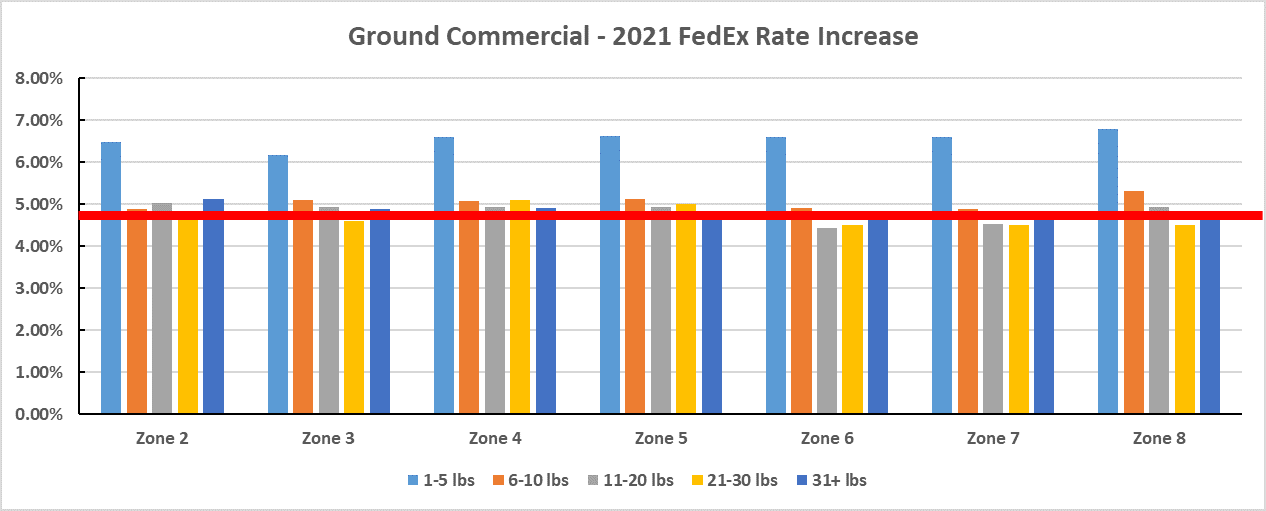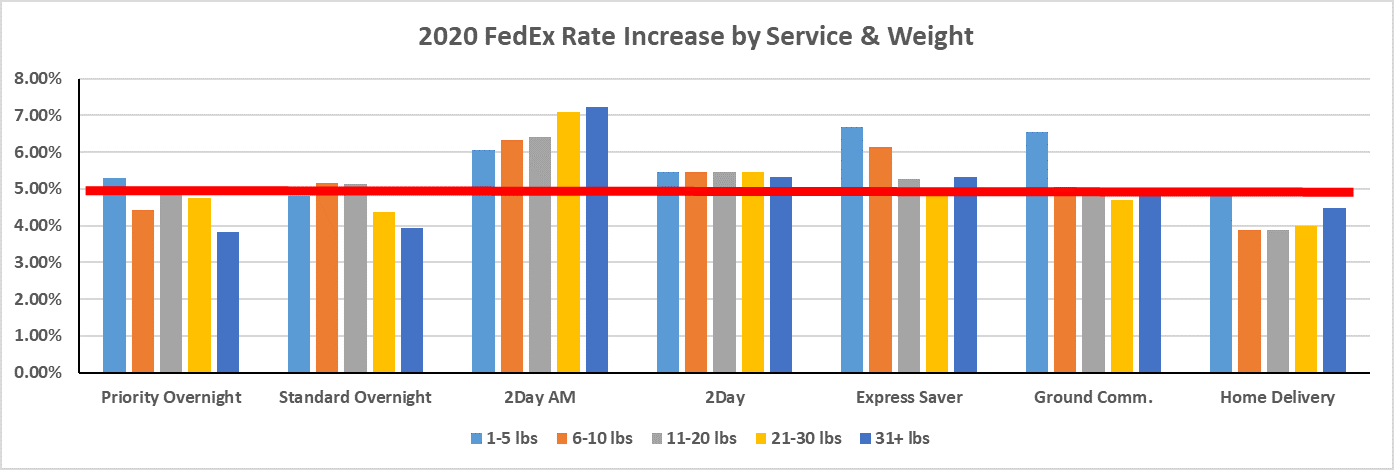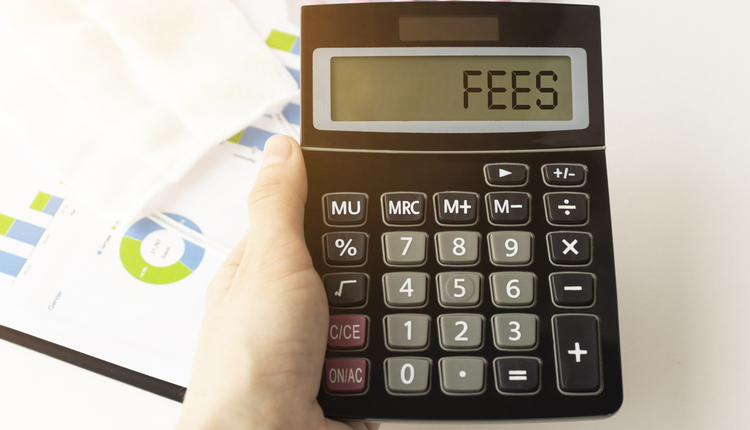Note that there is often a discrepancy between the announced increases and the effect that the increase has on individual shippers.
Our team at Shipware will perform a detailed analysis of the announced increases over the next week, but in the interim, here are some areas which will likely provide the most impact:
1. New For 2021, FedEx will charge 6% late payment fees. This is commensurate with current UPS late payment fees. Shippers that have trouble paying within the standard 15-day window should look to negotiate longer terms. FedEx has often touted their lack of late payment fees, so shippers used to paying a few days late could face unwanted new charges. It is more important than ever for shippers to utilize freight audit and payment providers to avoid unnecessary late payment fees.
2. FedEx continues its emphasis on penalizing large packages in its networks. The new trigger (effective January 18th, 2021) for Additional Handling – dimensions is 105” combined length plus girth (length and girth = length + 2*height + 2*width).
These larger packages are problematic for carriers’ conveyance systems, are difficult for their couriers to handle, and take up valuable room on trucks.




Also effective January 18th, 2021, other surcharge ratings will occur:
- FedEx Freight will introduce a High Cost Service Area Surcharge, which will apply to shipments not rated on FXF PZONE/EZONE or FXF 1000/501, for corresponding (yet to be released) ZIP Codes.
- International Out-of-Delivery-Area and International Out-of-Pickup-Area will be assessed based on Zip Codes from this list: https://www.fedex.com/content/dam/fedex/us-united-states/services/ODA_OPA_ZIP_changes.pdf
Effective February 1st, 2021, the FedEx Freight fuel surcharge will be assessed on the per pound rated weight of the shipment. A preview of the new table is available here: https://www.fedex.com/content/dam/fedex/us-united-states/services/fuel_surcharge_effective_2-1-21.pdf
How will this affect individual shippers? The general rate increase will affect some shippers more than others. If you’re a shipper that sometimes pays late, ships large packages, low weight ground or ground residential, two or three day express, long-zone express, or incurs a large amount of accessorial charges (as a percentage of overall spend), it is likely that you will be subject to an increase much larger than the stated 4.9%. As is the case annually with rate increases it is vital to understand how all the combined changes will impact your individual characteristics and ultimately your overall shipping costs.
Matt Bohn is Senior Consultant for Shipware, a parcel consulting firm that specializes in cost reduction and recovery services. Prior to his work at Shipware, Matt spent nine years as a Senior Pricing Advisor at FedEx, where he analyzed pricing programs and wrote pricing contracts for some of FedEx’s largest e-commerce and retail shippers. Matt earned an MBA in Finance from the University of Pittsburgh’s Joseph M. Katz School of Business. He can be reached at mbohn@shipware.com.


















